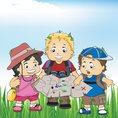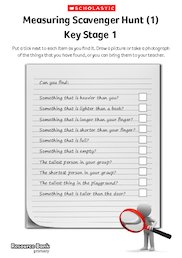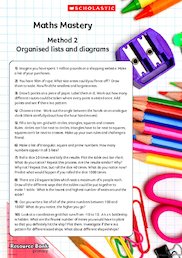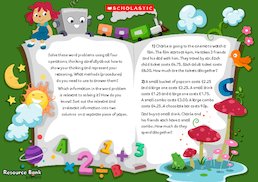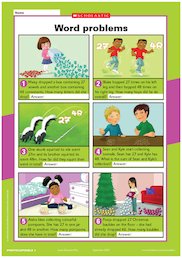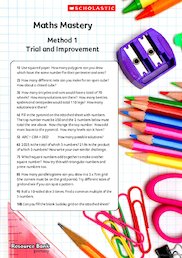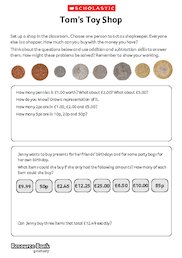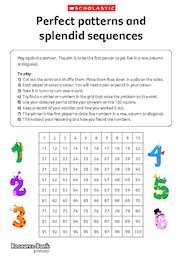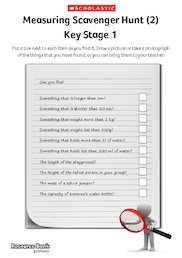KS2 Maths Scavenger Hunt (2)
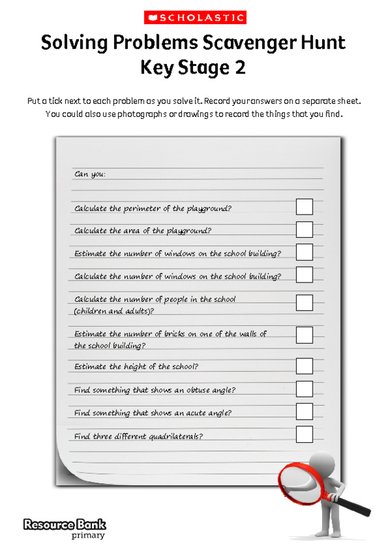
Downloadable content
- gbp prices
- Price: £0.99
Buy this and your school gets £0.20 to spend on books
This product has not been rated yet.
0 reviews (Add a review)
Download information
It's quick and easy to purchase and download our digital products.
- Add this product to your basket.
- When ready, check out your order.
- You will be sent an email notification.
- Follow the link in the email to the digital downloads page in your manage account area.
- Your digital purchases can then be accessed on multiple platforms.
Product description
The Hunt Is On! Children love the competition of a scavenger hunt with a Maths twist, and it’s also a great way to encourage outside-the-box thinking. This is a truly versatile format that can slot into your lesson whatever age and topic you’re planning for. And don’t despair if the weather takes a turn for the worse. The hunts can easily be adapted to an indoor setting.
A scavenger hunt is a game that is usually played in pairs or a small team, that takes place in a large area – for instance, your school grounds. The teacher will give each of the teams a pre-prepared list of objects that need to be found in that area. With a twist on the usual game, many of these maths hunts will ask children to find and then photograph, or draw, what they have found for each of the items on the list.
As the children’s mathematical abilities develop further, the scavenger hunts are a good way to bring real-life context into the arithmetic skills that they have learnt. This scavenger hunt involves solving problems around the school grounds and covers a range of topic areas, incorporating number, geometry and measurement.
As well as calculating with large numbers, the children will also need to estimate some of the answers. This is good opportunity to discuss how we can make more accurate estimations, using information about what we already know.
An example of this would be estimating the number of bricks on one wall of the school building.
A good starting place would be to count the number of bricks in 1 metre square, and then work out approximately the area of the wall. From this information, they will be able to make a much more accurate estimation than perhaps they first thought.
Children will need a range of equipment to help them answer these problems, such as trundle wheels, metre sticks, maths dictionaries and cameras.
Access thousands of downloadable resources anytime, anywhere from just £1.25 per month
Primary members of the Scholastic Resource Bank can get instant access to this resource sheet and thousands more online resources. Our finely crafted resources include lesson plans, teaching ideas, planning and assessment tools, activity sheets, interactives and video.
-
Maths scavenger hunts
Primary
members only -
KS1 Maths Scavenger Hunt (1)
Key stage 1
Primary
members only -
KS1 Maths Scavenger Hunt (2)
Key stage 1
Primary
members only -
Mastery in Mathematics – Measurement
Key stage 1, Key stage 2
Primary
members only -
Weather – Numeracy (KS2)
Key stage 2
Primary
members only
Please note this is a digital-only product. You will receive an email containing a link to download your product after purchase.
Product Details
Date published
February 2nd, 2017
Resource details
- File type:
- File size:
- 300 KB
- Pages:
- 1
Reviews
This product has not been reviewed yet.

